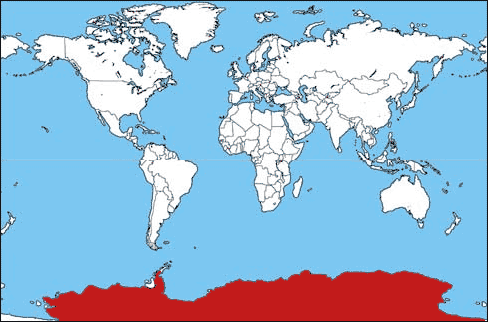
Circle the area on this map

D. Antarctica has about 90 percent of the world's ice containing about 70 percent of the world's fresh water. The ice would raise sea levels 200 feet if it all melted
B. While most of the world's fresh water is trapped in the its ice, the continent is considered a desert. The South Pole receives less than 4 inches average precipitation a year.
D. There have been hints that the water may contain microbes which evolved to derive energy from minerals by "eating rocks." If these new life forms are uncovered, it could help astrobiologists who believe conditions in the lakes may be similar to those in the liquid water thought to exist under the surfaces of icy moons in the outer Solar System
C. The lowest reliably measured temperature - 128.6 degrees Fahrenheit below zero - was recorded at the research station in July 1983. Treaties have set aside Antarctica as scientific preserve and banned military activity on the continent. The American Amundsen–Scott South Pole Station is located at the southernmost spot on the globe.